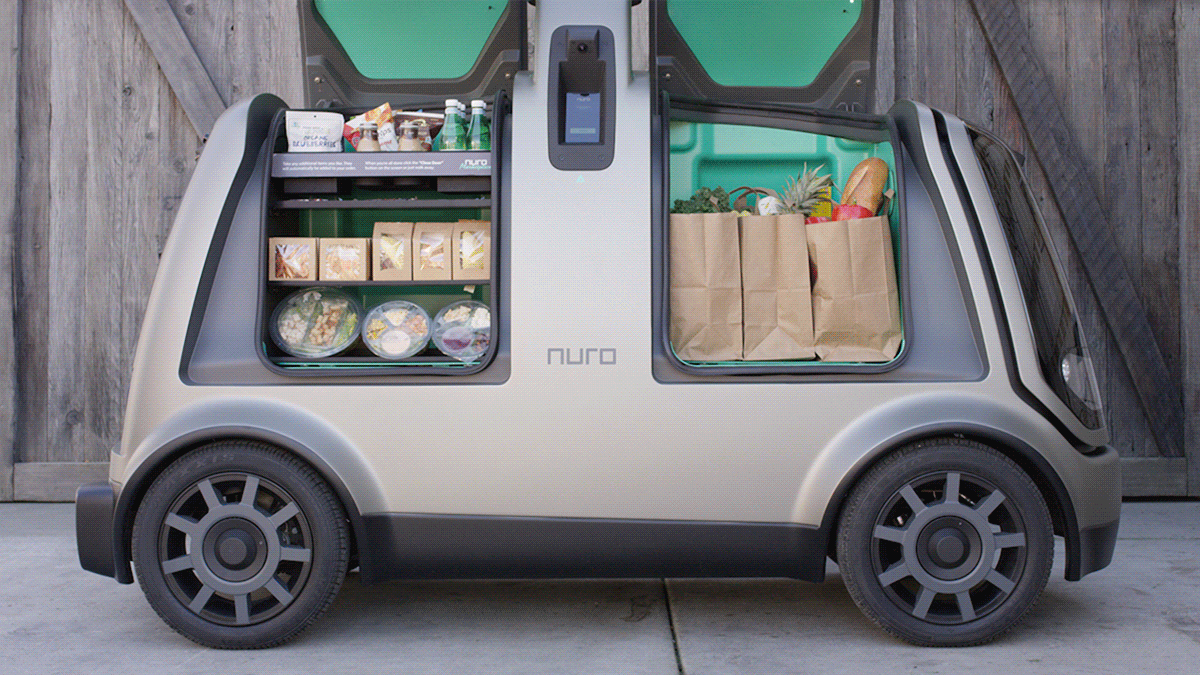The new Nuno R1 autonomous delivery vehicle has arrived, and if all goes well, it will soon be making grocery deliveries from Kroger to a house near you. Not near me, unfortunately, as the distance to my closest Kroger store is measured in thousands of kilometers.

While the Nuro may have OK styling, its design is not great. Take the hinged (gull-wing?) door openings. They are much wider and thus heavier than necessary to provide full access to the storage areas. There is no reason for these doors to open as widely as the do. The vehicle rakes, unnecessarily, front and back. Why isn’t this area being used to house navigational equipment, instead of the centre of the vehicle, which could be designed to include more storage space?
In contrast, here is my own attempt at a delivery vehicle design that does address some of these issues, although the purpose of this vehicle is transport of building materials, rather than groceries. Even the colour is an improvement on dull beige-brown.

There are too many stylists at work, masquerading as designers. In the 1950s, stylists knew they were stylists.

Nineteen Fifty Seven represented a high point for American car styling, but not for car design. This is seen particularly in low-end brands, such as Chevrolet, Ford and Plymouth. In contrast, facelifted 1958 models are regarded with less esteem, although not quite as low as the 1959 models.
The 1957 Fords were all about styling, one that dramatically changed passenger car appearance the most since 1949. There were 20 different models, on two separate wheelbases. Body styles included two- and four-door sedans, hardtops, wagons, a convertible, a retractable hardtop and a sedan/pickup. These were all available in more colors and two-tone combinations than ever before. There were six engine options, five of them V-8s.
The challenge with making so many different products is that there is no place for design. I will not be buying a 1957 Ford, or any other heritage car. They are just too impractical – too low, too long, too extreme in styling language.
There is a similar situation in the world of fashion. Fortunately, in my world many of my outer clothes, especially shirts and socks, are bespoke. Material is selected specifically for each garment, sleeve length is cut perfectly, each shirt has two pockets, buttons are placed where I want them. Not every man, has a wife who has such abilities and interests. Without being too disparaging, I would say that I have one shirt design, that is then styled to meet specific requirements in each garment.
There may be a few more variations on designs for chinos and jeans, but most of these differ only in terms of their styling. I have learned to live with a particular off the rack style of chinos. They come in more or less standard design, with components that can be traced back to the 19th century. The original watch pocket has been repurposed many times. A Levi-Straus blog comments about many of these same components in jeans: http://www.levistrauss.com/unzipped-blog/2014/04/17/those-oft-forgotten-pant-parts/

